
Name the gate which represents the Boolean expression, \[Y=\overline{A\text{ }.\text{ }B}\]
A.NAND
B.AND
C.NOT
D.NOR
Answer
567.9k+ views
Hint: The expressions in Boolean Algebra can be reduced to simple terms very easily using identities. The reduced expressions can be checked with the binary digits 0 and 1 to determine whether the given expression is a NAND, AND, NOT or NOR equivalent.
Complete answer:
There are mainly three types of gates in Boolean algebra. They are:
AND: It is a binary operation or gate which gives output only if both the statements are TRUE. The table of AND operation looks like:
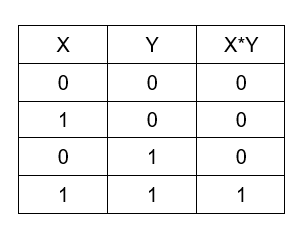
OR: It is a binary operation which gives the output if any of the variables is TRUE (1). The table of OR (+) operation looks like:
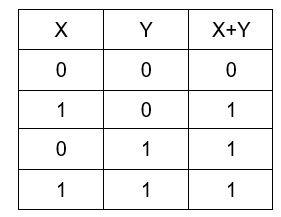
NOT: It is a unary operation which inverts the variable. The table of NOT operation looks like:
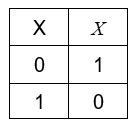
Now let us consider the given expression,
\[Y=\overline{A\text{ }.\text{ }B}\]
We can use the similar tables to find the equivalent expression.
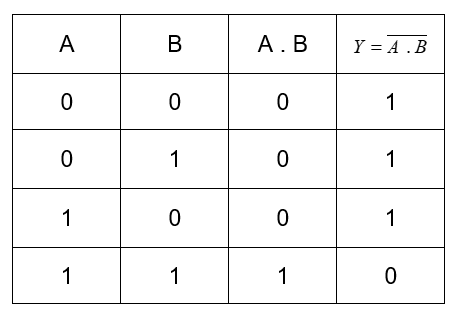
When we look at the basic gates, we can release that the table of \[Y=\overline{A\text{ }.\text{ }B}\] is the NOT operation on the AND operation.
The table of NAND operation can be derived from AND table as:
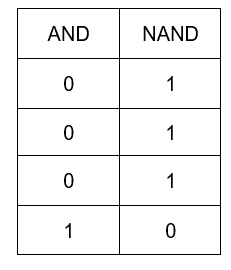
Therefore, the equivalent gate for \[Y=\overline{A\text{ }.\text{ }B}\] is a NAND gate.
The correct solution is option A.
Note:
Using the de Morgan’s theorem for Boolean algebra, \[Y=\overline{A\text{ }.\text{ }B}\] can be written as \[\overline{A\text{ }.\text{ }B}=\overline{A}+\overline{B}\]. We can find the solution to the question by using this theorem also. We need to find the complement values of A and B separately and use the OR operator.
All the operations in Boolean algebra can be derived from each other.
Complete answer:
There are mainly three types of gates in Boolean algebra. They are:
AND: It is a binary operation or gate which gives output only if both the statements are TRUE. The table of AND operation looks like:

OR: It is a binary operation which gives the output if any of the variables is TRUE (1). The table of OR (+) operation looks like:

NOT: It is a unary operation which inverts the variable. The table of NOT operation looks like:

Now let us consider the given expression,
\[Y=\overline{A\text{ }.\text{ }B}\]
We can use the similar tables to find the equivalent expression.

When we look at the basic gates, we can release that the table of \[Y=\overline{A\text{ }.\text{ }B}\] is the NOT operation on the AND operation.
The table of NAND operation can be derived from AND table as:

Therefore, the equivalent gate for \[Y=\overline{A\text{ }.\text{ }B}\] is a NAND gate.
The correct solution is option A.
Note:
Using the de Morgan’s theorem for Boolean algebra, \[Y=\overline{A\text{ }.\text{ }B}\] can be written as \[\overline{A\text{ }.\text{ }B}=\overline{A}+\overline{B}\]. We can find the solution to the question by using this theorem also. We need to find the complement values of A and B separately and use the OR operator.
All the operations in Boolean algebra can be derived from each other.
Recently Updated Pages
Master Class 12 Economics: Engaging Questions & Answers for Success

Master Class 12 Maths: Engaging Questions & Answers for Success

Master Class 12 Biology: Engaging Questions & Answers for Success

Master Class 12 Physics: Engaging Questions & Answers for Success

Basicity of sulphurous acid and sulphuric acid are

Master Class 12 Business Studies: Engaging Questions & Answers for Success

Trending doubts
How much time does it take to bleed after eating p class 12 biology CBSE

Explain sex determination in humans with line diag class 12 biology CBSE

Differentiate between homogeneous and heterogeneous class 12 chemistry CBSE

When was the first election held in India a 194748 class 12 sst CBSE

Explain sex determination in humans with the help of class 12 biology CBSE

December 10th of 1948 is an important day in the history class 12 sst CBSE




